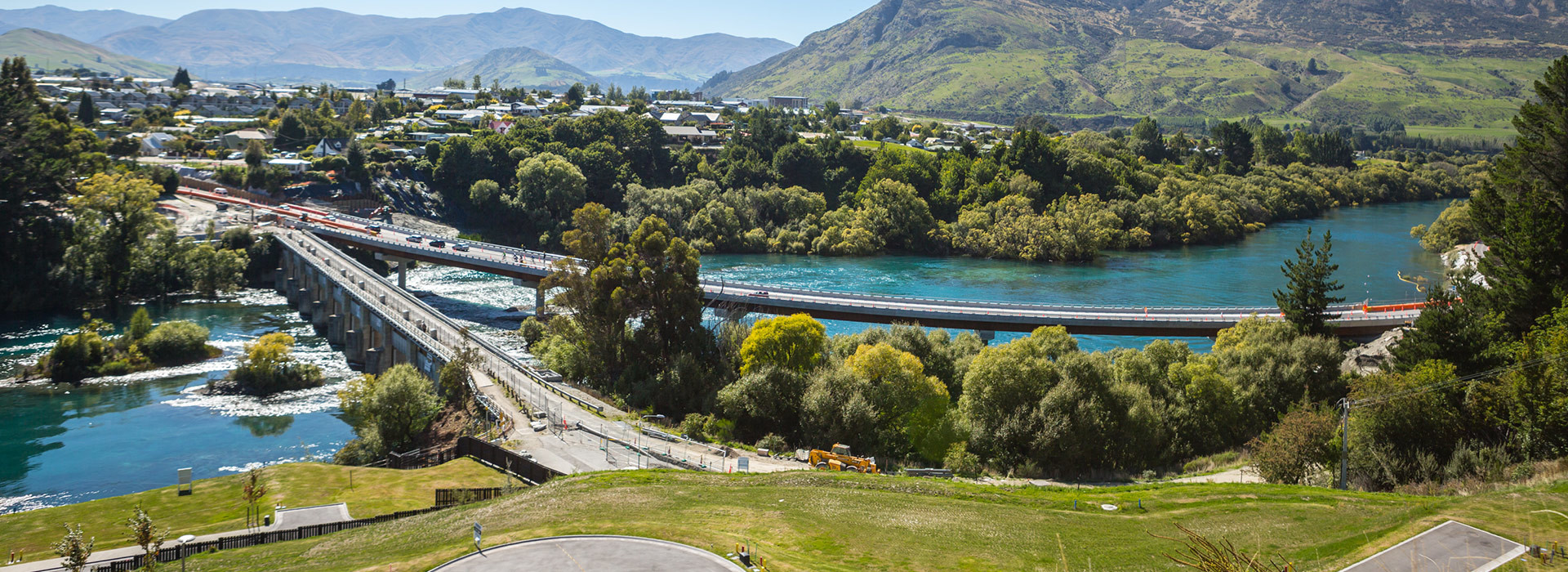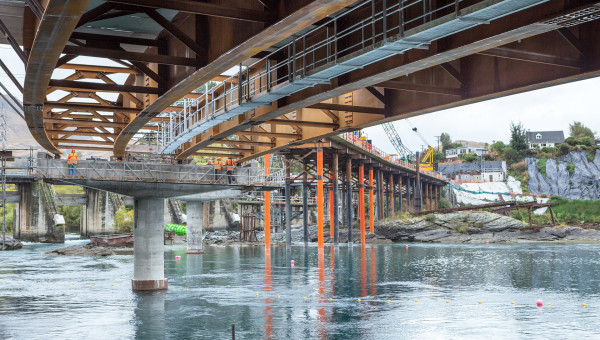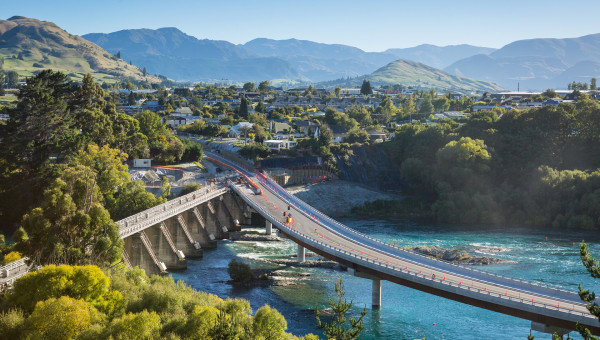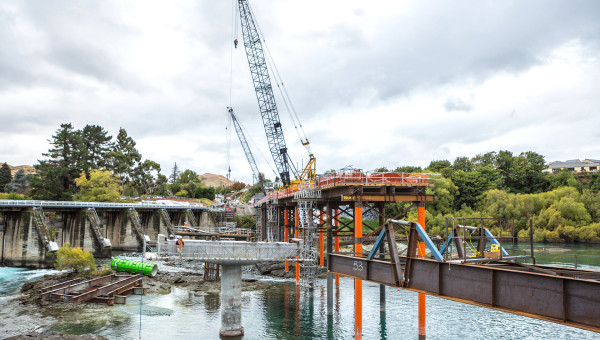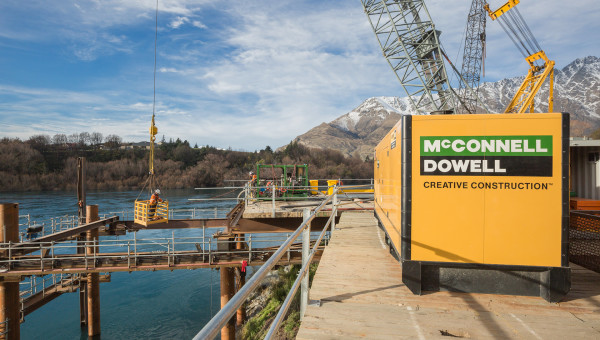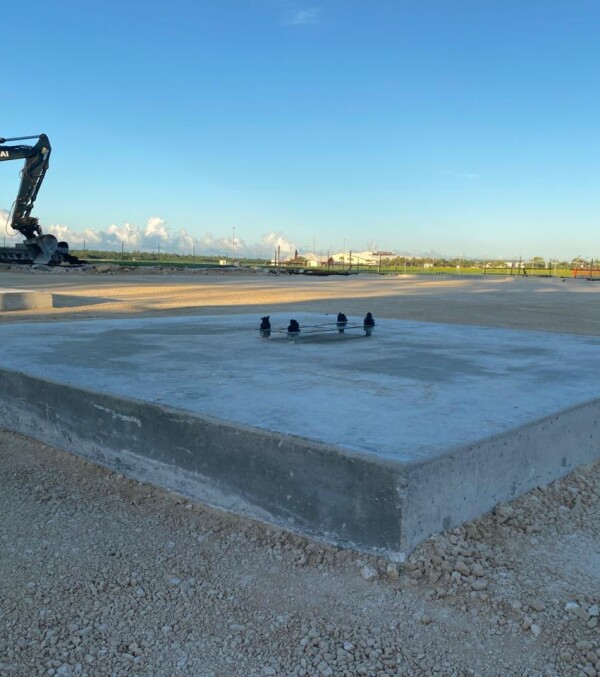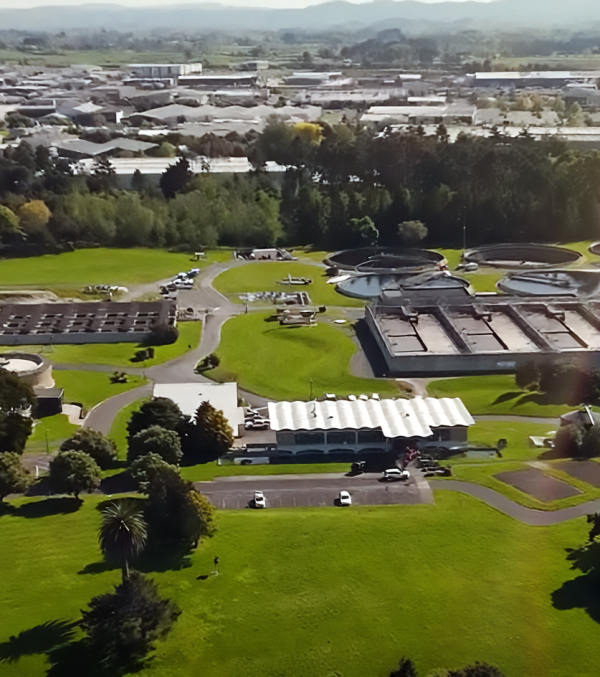|
Customer: New Zealand Transport Agency Location: Queenstown, New Zealand Contract type: Design & Construct
|
Fast Facts
|
The stunning Kawarau Falls Bridge was delivered by McConnell Dowell for the NZ Transport Agency.
At 250 m long, the sweeping, curved structure consists of steel girders, which form the backbone of the bridge. These weathering steel girders, designed to blend in with the environment, were installed using a unique launch nose method designed in-house by McConnell Dowell temporary works engineers.
The new two-lane bridge replaces an historic 90-year-old, one-lane bridge which is now part of the Queenstown Trail cycling and walking network. Designed to eliminate delays at the existing one-lane bridge and improve the State Highway link from Queenstown to Southland and Milford Sound, the new bridge is a welcome addition to the scenic Queestown landscape.
The project team incorporated a substantial variation into the project involving the design, supply, and installation of bulk water and wastewater mains to minimise overall costs and future disruption to stakeholders, the local community, Queenstown Lakes District Council, and the Transport Agency.
The Challenge
The design of the bridge was technically and logistically challenging to execute. Its geometry is two thirds curved and its location over the pristine Kawarau River, with a topography of steep banks running down each side, presented significant challenges for construction. The space is incredibly confined, so all work needed to be well planned and coordinated. Works were also undertaken over and beside a historic mill stone wall, which needed to be protected.
The Solution
Using a launch nose method to construct a bridge is fairly uncommon in New Zealand and has only been done a few times before. The 24.5 m long launch nose allowed short sections of the bridge (between 16 and 22 m long) to be constructed onshore in the limited space available. These sections were then launched out to pier columns driven into tough river rock below, using hydraulic rams from a temporary trestle. The ‘nose’ minimised the temporary works required and maintained river access both up and downstream, minimising disruption to river users, including tourism operators, and preserving the sensitive river environment.
Key to Success
The team worked collaboratively with the Transport Agency to manage project risks, provide alternate solutions, and keep stakeholders informed. Community involvement was actively encouraged throughout the project with locals even helping to launch three sections of the bridge deck.

